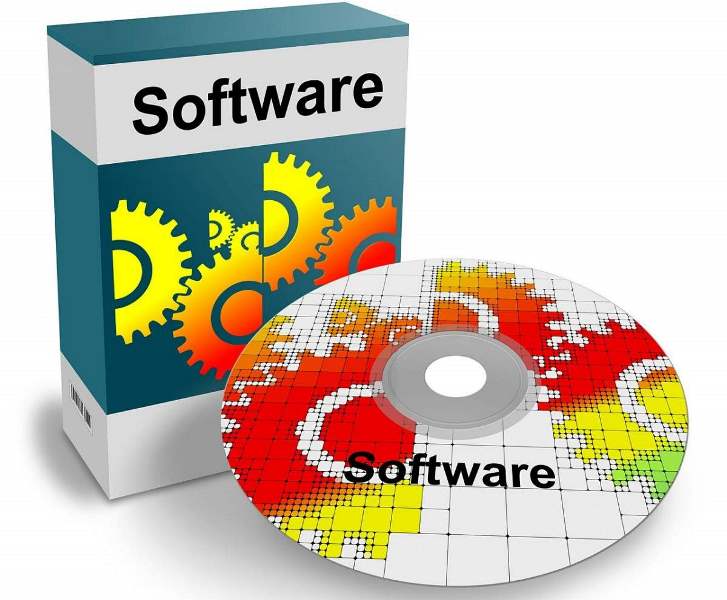We have seen that the market is moving fast toward the adoption of Cloud-based software solutions. We are seeing hardware manufacturers also taking advantage of this change with hardware/software integrated solutions to achieve a seamless user experience. We also see that enterprises and businesses are also looking for offshore and off-the-shelf costing solutions that allow any business to be creative, thus reducing the overhead costs.
Many enterprises have already experienced that software outsourcing reap tons of benefits which can help them gain efficiency if they also implement simple solutions to automate their business.
Enterprise Software development is on the trend, and why not? Every business requires a different kind of solution to meet their needs for corporate data collection, analysis, and manipulation whereas, in traditional models, businesses were required to build an extensive amount of tools to achieve these requirements.
The real challenge is to find the right way to do this and below in this article, we shall discuss the meaning of enterprise software development and how it’s done in 2022.
What is Enterprise Software development?
Enterprise Software development is the process of building enterprise software systems that meet the specific needs of an organization through a combination of information technology, applications, and infrastructure. It is a software development most commonly carried out by in-house developers at larger organizations to create software systems that meet their business requirements.
Enterprise software is successfully used all over the world in many industries such as aviation, manufacturing, telecommunications, and transportation. Some examples of this are Air Traffic Management systems used to calculate the optimum amount of fuel needed for each flight, or Intranet Software used in Airline Reservation systems for airlines to assist with booking and checking reservations.
Enterprise Software development process in 2022

Design and Prototyping
Design and prototyping are essential parts of any software development process. It helps the team to understand the user requirements and also to design a robust architecture for the project. Design is done by working together with users, stakeholders, and developers to come up with solutions that are good enough for users to use and meet the business goals.
In 2021, we saw different approaches taken by different companies towards designing software applications. One approach was using Agile methodologies like SCRUM which emphasized iterative design cycles. The other approach was using a more traditional waterfall model where there were multiple phases in a single iteration. This made it difficult for teams to work together efficiently and collaborate effectively. It also led to a lot of rework when issues were discovered late in the cycle.
In 2022, we will see more focus on collaboration between designers and developers through tools like Sketch, Adobe XD etc., which allows designers to create prototypes quickly that can be used by developers as well as other stakeholders such as product managers or business analysts who have no coding background at all.
Development
Development is the process of creating a software product or system. It involves activities such as analysis, specification, design, programming, and testing.
It is a structured methodical process, which includes various steps to achieve the desired outcome. The development process begins with the definition phase and ends with the deployment phase. The development process includes all activities from requirements gathering through test execution.
The main objective of development is to create software that meets all the requirements of the customer. This includes ensuring that it meets all functional and non-functional requirements set out during requirement analysis.
The development process also ensures that there are no defects in the software being developed and that it meets performance standards specified by the user or customer. The development team takes care of these aspects during requirement analysis, design specification, and coding phases of the software development life cycle (SDLC).
Testing and Feedback
Testing is an important part of the enterprise software development process. To make sure that the software works as expected, you need a way to test it. There are two types of testing: manual and automated.
Manual testing involves having human beings do tests on the software. They might perform a series of steps or inputs and then check to see if they get the expected results. Manual testing can be time-consuming because people have to be paid to do it and there are limitations on how many people you can hire for this type of test.
For example, if you want to test every possible combination of input data, then you may need hundreds or even thousands of testers working for months at a time! Automated testing uses computers instead of humans so that all possible combinations of input data can be tested quickly and efficiently.
However, automated testing often requires very specific types of programming skills to write tests, which means that hiring automated testers can also be expensive and time-consuming due to the high demand for these skills.
Feedback is another key part of the enterprise software development process because it allows developers to learn from their mistakes before they spend too much time building something that doesn’t work well or isn’t useful at all.
Release and Deployment
Release and Deployment is the final stage of the process. At this stage, the product is ready to be released in the market. The developers have to perform several tasks such as versioning, packaging, integration, and testing before releasing a new version of the software.
The deployment of software depends on the kind of product being developed. For example, if you are creating an application for Android devices, then it can be easily installed on any device. However, if you are developing a desktop application then it has to be installed on a computer before using it.
In 2022, some companies will be able to release new versions of their products automatically after every commit in GitHub or another source code repository. This will allow developers to focus on creating new features and fixing bugs instead of manually releasing them.
Conclusion
An enterprise solution is much more than just a point-of-sale system or a piece of software that helps your business manage inventory. To truly meet the needs of most businesses, it will need to go far beyond that, adding in features that help with everything from accounting to payroll and logistics management.
As you evaluate different products, don’t be afraid to ask about the various capabilities it can support your business. You might be surprised at how much power even the simplest software solutions can have.
 Infographic Portal New Infographics Resource Portal
Infographic Portal New Infographics Resource Portal
